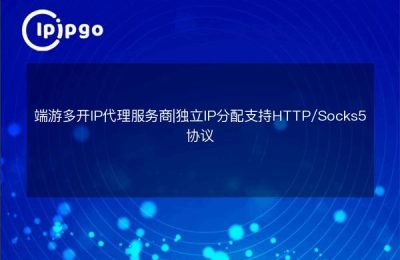
How to Use Crawler IP Proxy
When performing web crawling, using IP proxies can effectively avoid being blocked by the target website and improve the efficiency of data crawling at the same time. In this article, we will introduce in detail how to use a crawler IP proxy, including the steps of choosing a suitable proxy, configuring the proxy, and using the proxy for crawling.
1. What is a crawler IP proxy?
Crawler IP Proxy is a technology that forwards requests through an intermediate server, allowing users to hide their real IP address when performing data crawling. Its main roles include:
- Hide Real IP: Reduce the risk of being banned by sending requests through a proxy server.
- Improve crawl speed: Reduce request latency and improve crawling efficiency by rotating IP addresses.
2. Choose the right IP proxy
Before you can use a crawler IP proxy, you first need to choose the right proxy service. Here are some factors to consider when choosing a proxy:
- Agent Type: Common proxy types include HTTP, HTTPS and SOCKS. choose the appropriate proxy type according to the needs of the crawler.
- anonymity: Choose a proxy with high anonymity to avoid being recognized and blocked by the target site.
- Speed and Stability: Ensure that proxy servers are fast and stable to avoid crawl failures due to proxy problems.
- IP resources: Choose a proxy service that offers rich IP resources for frequent IP address switching.
3. Configure the crawler to use an IP proxy
The steps to configure a crawler to use an IP proxy typically include the following:
3.1 Installation of required libraries
Before crawling, you need to make sure that you have installed the relevant crawler libraries (e.g. Scrapy, Requests, etc.). For example, use pip to install the Requests library:
pip install requests
3.2 Setting up the agent
In crawler code, the proxy is usually set up in the following way:
import requests
# Setting up proxies
proxies = {
'http': 'http://your_proxy_ip:port',
'https': 'https://your_proxy_ip:port',
}
# Send request
response = requests.get('https://example.com', proxies=proxies)
# Output the response
print(response.text)3.3 Handling agent failures
When using proxies, you may encounter situations where the proxy fails or is blocked. These can be handled by exception catching:
try.
response = requests.get('https://example.com', proxies=proxies)
response.raise_for_status() # Check if the request was successful or not
except requests.exceptions.ProxyError:
print("Proxy error, please check proxy settings.")
except requests.exceptions.RequestException as e: print(f "Proxy error, please check proxy settings.")
RequestException as e: print(f "Request error: {e}")4. Considerations for crawling with proxies
- Frequent IP switching: To minimize the risk of being banned, it is recommended to switch IP addresses regularly in the crawler.
- Setting the request interval: To avoid sending requests too often, random request intervals can be set to simulate the behavior of human users.
- Monitoring Agent Effectiveness: Regularly check the validity of the agents to ensure that the agents used are working properly.
- Adherence to the site's crawler protocol: Follow the rules in the robots.txt file to avoid burdening the target site.
5. Summary
Using a crawler IP proxy can effectively improve the efficiency and security of data crawling. By choosing the right proxy, configuring the crawler code correctly, and paying attention to related matters, you can carry out web crawling smoothly. I hope this article can help you better understand and use the crawler IP proxy to make your data crawling work more smoothly!








